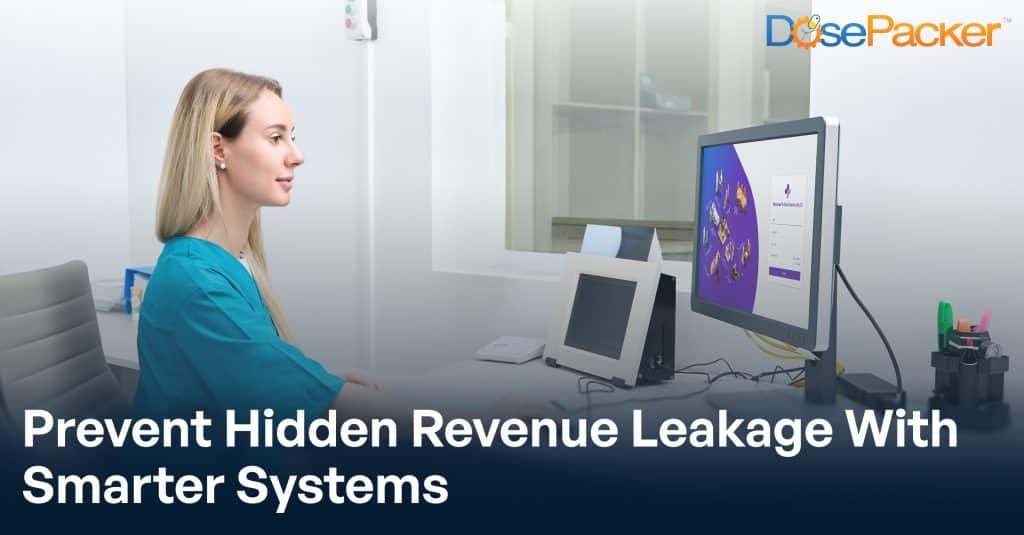- Understanding the Difference: Assisted Living vs. Independent Living
- Who Thrives Where? Matching Needs with Lifestyles
- Medication Management: A Defining Distinction
- Introducing DosePacker: Medication Management Support
- Designing Space for Living and Safety
- Cost and Care Levels
- When Needs Evolve: Continuum of Care Environments
- Choosing with Insight, Not Emotion
- Final Thoughts: Finding the Right Fit
Unlock the latest in medication management technology and grow your care community with us.

Nearly 70% of seniors are expected to need some form of assisted living care later in life. With so many families facing this reality, understanding the differences between independent living and assisted living becomes more than a matter of convenience! It’s a crucial step in planning for comfort, safety, and quality of life.
While both options support aging with dignity, the level of day-to-day care, independence, and oversight can vary significantly. In this guide, we’ll explore the key differences between assisted and independent living and show how innovative tools, like DosePacker’s medication management solutions, can enhance the experience in either setting.
Understanding the Difference: Assisted Living vs. Independent Living
Independent living communities offer private residences and social programs for active seniors who manage their own daily routines, like medications, meals, and transportation.
By contrast, assisted living offers a supportive environment where residents receive help with daily living activities (ADLs), including bathing, grooming, and medication administration, alongside access to caregiver staff and safety features.
Thus, assisted living versus independent living boils down to two neighboring choices on the care spectrum: one emphasizes self-direction, while the other emphasizes hands-on assistance.
Assisted Living vs. Independent Living: At-a-Glance Comparison
Feature |
Independent Living |
Assisted Living |
|
Primary Resident Needs |
Active and autonomous adults |
Individuals requiring regular help with ADLs |
|
ADL Support |
No staff support, may arrange outside help |
On-site help with bathing, dressing, mobility, and medication |
|
Medication Handling |
Fully self-managed, with optional reminders |
Staff-assisted with daily tracking and administration |
|
Accommodation Layout |
Independent apartments with kitchens |
Accessible units designed for safety and convenience |
|
Staff Availability |
On-call support |
24/7 trained caregivers on-site |
|
Estimated Monthly Cost |
Who Thrives Where? Matching Needs with Lifestyles
Choosing between independent living and assisted living is rarely about which is better; it’s about which environment best matches your loved one’s current capabilities and evolving needs.
Both models support older adults in living fulfilling lives, but they differ significantly in the level of day-to-day assistance available. While independent living is geared toward seniors who value freedom and minimal intervention, assisted living is built for those who may need help with daily activities but still want to maintain a level of independence. To make the right decision, it’s essential to assess your loved one’s physical health, emotional well-being, and future care needs.
Independent Living is Ideal When:
- Your loved one is healthy and active
- Daily routines and mobility are well-maintained
- Independence and autonomy are top priorities
Assisted Living: When to Consider It
- Regular support for bathing, dressing, or mobility is needed
- There’s a growing need for supervised medication assistance
- Safety concerns, such as fall risk or wandering, are present
Understanding the difference between assisted and independent living means recognizing when support needs grow beyond convenience and become essential for overall well-being.
Medication Management: A Defining Distinction
The way each community handles medications often makes the biggest difference in day-to-day experience:
- In independent living, residents are responsible for:
- Ordering and refilling prescriptions
- Self-administering medications
- Seeking help from family or external caregivers
- In assisted living, staff is responsible for:
- Safe medication storage
- Administering doses on time
- Tracking and documenting adherence
- Informing families or physicians about discrepancies
Introducing DosePacker: Medication Management Support
Whether selecting independent or assisted care, medication is rarely “set and forget.” DosePacker’s smart medication management is designed to fit both lifestyles:
- For independent living, it ensures:
- No skipped or double doses
- Integrated digital reminders
- Simple refill coordination
- Peace of mind for families and residents
- DosePacker’s solutions for assisted living ensures:
- Automated daily medication compliance packs
- Secure storage and on-time tracking
- Digital logs and alerts for staff
- A clear audit trail for each dose
By reducing manual errors and logging every dose, DosePacker enables caregivers to focus on personal interactions rather than paperwork.
Designing Space for Living and Safety
Independent living apartments feature full kitchens, ample space, and freedom of choice, providing areas where residents can cook, entertain, and customize their living spaces.
Assisted living takes accessibility seriously: single-level layouts, safety handrails, lowered thresholds, and emergency systems ensure residents move safely throughout the day.
Communal areas in assisted living, located near private units, serve as hubs where caregivers can easily monitor and engage with residents, without restricting their daily choices.
Cost and Care Levels
In the U.S., Independent living averages around USD 3,100/month, whereas assisted living averages USD 5,350/month as of 2023.
Key cost variables include:
- Base rent or entrance fee
- ADL support levels
- Medication management technology and staffing
- Meal plans, transportation, and activity fees
- Capacity to support transitions to memory or skilled nursing
Families who plan ahead can better manage costs and choose communities that adapt as their loved one’s needs evolve.
When Needs Evolve: Continuum of Care Environments
Some senior living campuses offer a full continuum of care, providing independent living, assisted living, memory care, and skilled nursing services all on-site. This model supports aging in place:
- For those starting in independent living, escalating needs can be met without moving to an entirely new community
- Care transitions become less disruptive
- Familiar surroundings support emotional well-being
If you’re comparing care intensity, consider this deeper dive: Assisted Living vs Skilled Nursing Facility
Choosing with Insight, Not Emotion
Ask these essential questions when touring communities:
- How do you manage medication administration, particularly during staff changes or emergencies?
- What accessibility features support mobility and safety?
- Is there an environment equipped for future memory care, if needed?
- How do you document and communicate care transitions to families?
- What technologies, like DosePacker, are available to support independence and accuracy?
Knowing the answers ensures you’re comparing substance, not just style!
Final Thoughts: Finding the Right Fit
The choice between assisted living vs independent living isn’t “which is better”, it’s “which suits their current lifestyle and can adapt over time.”
- If your loved one is thriving, independent living allows for autonomy with the benefits of community support.
- When daily care or medication support becomes frequent, assisted living offers structure and safety without loss of dignity.
DosePacker’s medication management solutions support both models, promoting independence, reducing errors, and allowing caregivers to focus on care.
Whatever your choice, the priority is simple: a place where safety, connection, and respect are always front of mind!
To see how DosePacker optimizes care with smart solutions, contact us today!



























